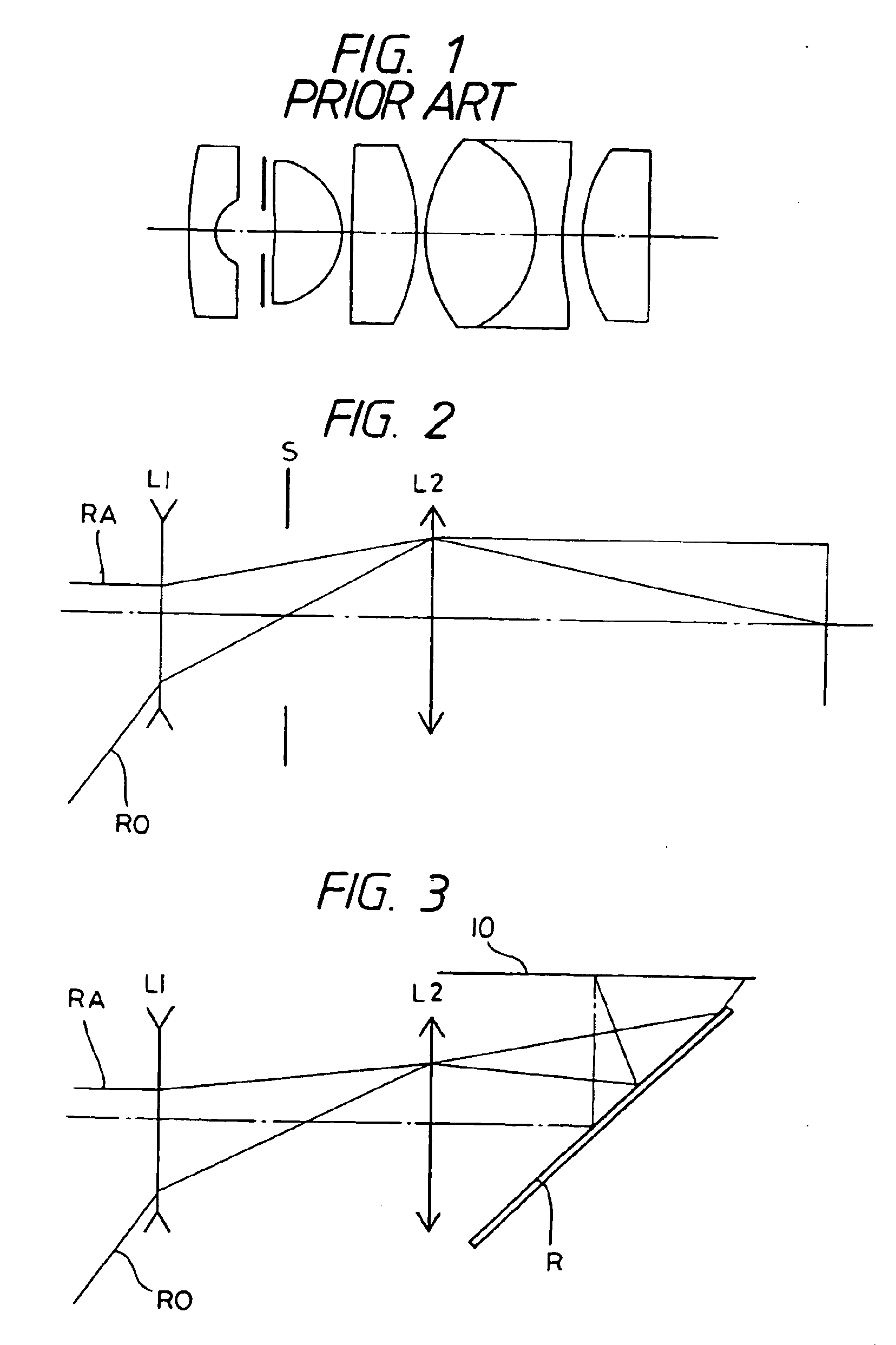Objective lens system
a lens system and objective technology, applied in the field of objective lens systems, can solve the problems of low producibility or high manufacturing cost, difficult to correct offaxial aberration, and inability to produce high optical performance from two homogeneous spherical lens elements, etc., to achieve wide field angle and favorable correction of aberrations
- Summary
- Abstract
- Description
- Claims
- Application Information
AI Technical Summary
Benefits of technology
Problems solved by technology
Method used
Image
Examples
sixth embodiment
[0088]The objective lens system according to the present invention which has a sixth embodiment is characterized in that it is composed, in order from the object side, of a first lens unit having a negative refractive power and a second lens unit having a positive refractive power; that it uses at least one radial type gradient index lens element which has a refractive index distribution in a radial direction expressed by the formula (a); and it uses a reflecting surface for at least a single reflection disposed on the image side of the second lens unit.
[0089]Resolution of an optical system for endoscopes which uses a solid-state image pickup device such as a CCD, for example, can be enhanced by reducing the size of picture elements and arranging these picture elements in a larger number at a higher density on the image pickup device. However, the size of a picture element can be reduced only within a certain manufacturing limit and it is therefore conceivable to enhance resolution ...
first embodiment
[0199]the objective lens system according to the present invention has a composition illustrated in FIG. 4. Speaking concretely, it is composed of two lens units, i.e., in order from the object side, a first lens unit consisting of a negative lens element, a stop and a second lens unit consisting of a positive lens element. The second lens unit having the positive refractive power is configured as a radial type gradient index lens element. The first lens unit is composed of a homogenous lens element which has a planar surface on the object side and a concave surface on the image side, whereas the second lens unit is composed of a radial type gradient index lens element having a meniscus shape which has a concave surface on the object side.
[0200]Though it is ordinarily difficult to favorably correct lateral chromatic aberration in particular with two lens elements, the lens system preferred as the first embodiment is capable of favorably correcting lateral chromatic aberration by usi...
second embodiment
[0205]the present invention is an objective lens system which has a composition illustrated in FIG. 5. Speaking concretely, it is composed of two lens elements, i.e., in order from the object side, a first lens unit composed of a negative lens element, a stop and a second lens unit composed of a positive lens element. The second lens unit having the positive refractive power is configured as a radial type gradient index lens element.
[0206]The second embodiment is an example in which the objective lens system is configured so as to have a total length that is shorter than that of the first embodiment. In the second embodiment also, lateral chromatic aberration in particular is favorably corrected by using the radial type gradient index lens element as the second lens unit.
[0207]The radial type gradient index lens element has a meniscus shape which has a concave surface on the object side. When a radial type gradient index lens element has such a meniscus shape, its refractive power o...
PUM
 Login to View More
Login to View More Abstract
Description
Claims
Application Information
 Login to View More
Login to View More - R&D
- Intellectual Property
- Life Sciences
- Materials
- Tech Scout
- Unparalleled Data Quality
- Higher Quality Content
- 60% Fewer Hallucinations
Browse by: Latest US Patents, China's latest patents, Technical Efficacy Thesaurus, Application Domain, Technology Topic, Popular Technical Reports.
© 2025 PatSnap. All rights reserved.Legal|Privacy policy|Modern Slavery Act Transparency Statement|Sitemap|About US| Contact US: help@patsnap.com



